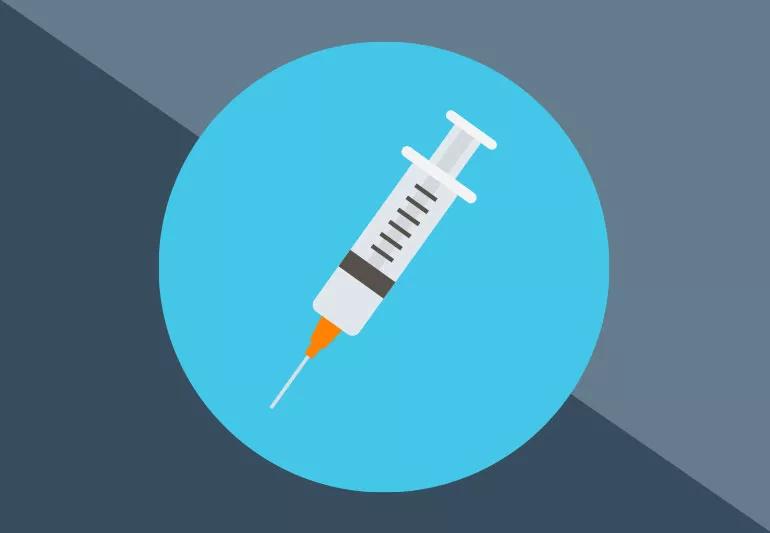Recent measles outbreaks raise concern

It’s hard to imagine that just 60 years ago, nearly every child got measles, the highly contagious viral disease that causes flu symptoms accompanied by a rash.
Advertisement
Cleveland Clinic is a non-profit academic medical center. Advertising on our site helps support our mission. We do not endorse non-Cleveland Clinic products or services. Policy
Thanks to a highly effective vaccine, the Centers for Disease Control and Prevention has considered measles “eliminated” from the U.S. since 2000.
Small outbreaks still pop up across the U.S. each year. They originate from unvaccinated individuals who travel to or from countries that still have endemic measles, and unknowingly bring the virus with them to the U.S.
“Measles can get into a community of unvaccinated or under vaccinated people, and that’s where you’ll see these small pockets of mini-outbreaks with 70 to 80 cases,” says Frank Esper, MD, a pediatrician who specializes in infectious diseases.
Widespread vaccination prevents those small clusters from becoming larger epidemics.
But the CDC reported a significant uptick of 372 measles cases last year. That, combined with several outbreaks already this year, has raised concern that the infection could be making a comeback.
Measles is a respiratory infection that causes bad cold and flu symptoms like a cough, fever, runny nose, red eyes and a rash.
In some cases, it can cause serious complications like an ear infection, pneumonia or encephalitis, which is severe and dangerous brain swelling.
The measles virus is, unfortunately, very easy to spread. When someone who’s infected coughs or sneezes, the virus can linger for up to two hours in the air or on nearby surfaces.
Advertisement
“Another insidious thing about measles is that you’re actually infectious up to four days before you even know that you’re sick,” Dr. Esper explains. “You can unknowingly spread the virus to people before you even have symptoms.”
The CDC recommends routine vaccination for measles in the form of the MMR (measles, mumps and rubella) vaccine, with the first dose given at age 12 to 15 months, and a second dose between ages 4 and 6.
“The problem is that there is no federal law for vaccination of children in the United States,” Dr. Esper explains. Rather, each state makes its own vaccine requirements for children who attend public school.
Most states allow parents to opt out of vaccinating their children because of religious beliefs, and some allow exemptions for parents with philosophical objections to immunization.
Rates of these non-medical exemptions have gone up in recent years, following the publishing of a paper that claimed a link between the vaccine and autism in 1998. That study was later retracted, and further research has not supported this link. But some parents still have
safety concerns and hesitate to vaccinate their children.
This creates pockets of under vaccinated communities that are more susceptible to infection with diseases like measles.
But Dr. Esper points out that some children go unvaccinated for medical reasons. Children who are allergic to components of the vaccine, or those with compromised immune systems, shouldn’t get the vaccine.
“We all get the vaccine for ourselves, and in doing so we are also protecting those who can’t get vaccinated,” he says. “That’s called herd immunity. We, as a society, are also protecting the most vulnerable by our own willingness to get this vaccine.”
Vaccination is the best bet for preventing infection with measles. But if your child cannot be vaccinated, Dr. Esper offers these tips:
The MMR vaccine is also designed to protect against mumps and rubella.
Rubella has been considered eliminated from the U.S. since 2004, but it’s still common in other countries and can be brought over by travelers.
In most people, it only causes mild illness. But if a woman is infected with rubella while she’s pregnant, it can be life-threatening to the baby, or cause a number of birth defects.
Advertisement
“We still test for rubella with every pregnancy,” Dr. Esper says.
Mumps is more common, with more than 2,000 cases reported in 2018. The MMR vaccine is slightly less effective at preventing mumps, as this infection can still take hold in communities even with high vaccination rates.
It spreads through coughing and sneezing in settings where lots of people live in close quarters, like college campuses.
For most people who acquire it, symptoms like fever, headache, muscle aches and swollen salivary glands are mild and go away within a few weeks. But rarely, mumps can cause long-lasting problems like meningitis, deafness or encephalitis.
“The best way to protect yourself against these and other diseases is with vaccinations,” Dr. Esper reiterates. “Our vaccine still works. Some people worry that the viruses mutate and the vaccine will no longer work, but that is not the case – it is extremely effective.”
Advertisement
Learn more about our editorial process.
Advertisement

Most recommended precautions center around minimizing bruising or swelling

Even one drink can have an impact on your cognitive function leading to slurred speech, blurred vision and impaired memory

Understand who may (and may not) benefit

Lorem ipsum dolor sit amet. Et odio Quis vel ipsam omnis eum alias deleniti et placeat impedit non voluptas galisum hic autem enim et cupiditate aliquid. Est beatae quidem non facilis autem ut commodi nisi aut tempore rerum et dolores voluptatem cum enim optio id sapiente quasi. Ad laboriosam officiis 33 cupiditate sequi ea voluptatum consectetur qui necessitatibus voluptate et quasi doloremque et facere explicabo quo explicabo officia

Seeking help through therapy can be an important step in improving your quality of life when you have UC

Type 2 diabetes isn’t inevitable with these dietary changes

Applying a hot or cold compress can help with pain